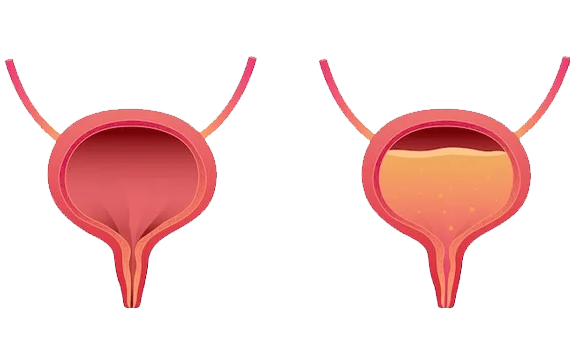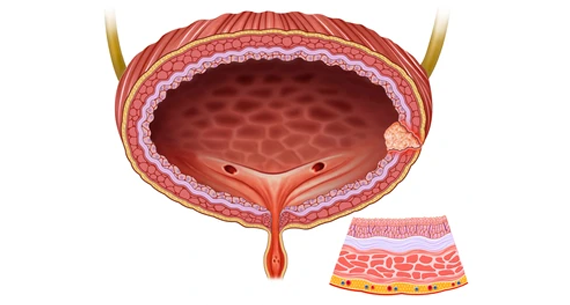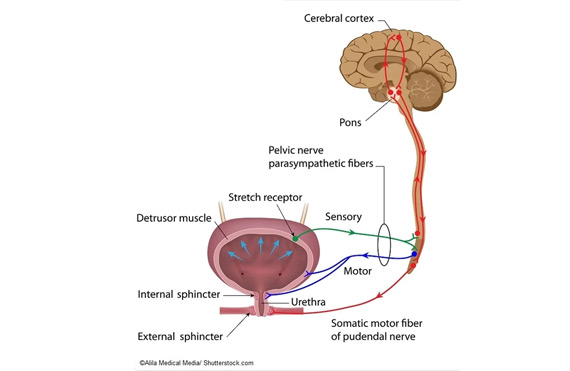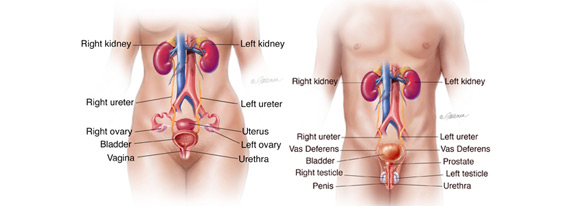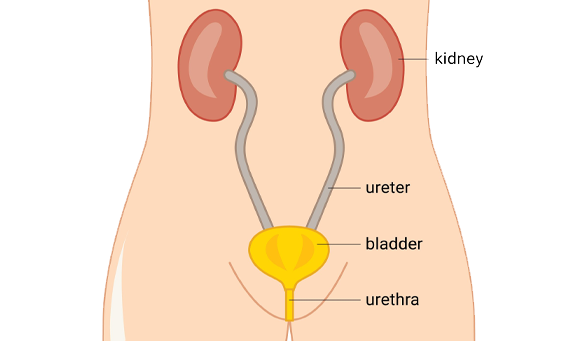The bladder has two main functions:
- Storage of urine and then to
- Empty the urine when it is full.
For this process to be successful, the nerves and the muscles of the urinary tract must work together. Nerves carry messages from the bladder to the brain and from the brain to the muscles of the bladder and sphincter .
The messages from brain centre tell the bladder muscle when to relax or contract.
In a neurogenic bladder, the nerves that are supposed to carry these messages to the bladder do not work properly so the bladder is not able to store or empty urine effectively.

